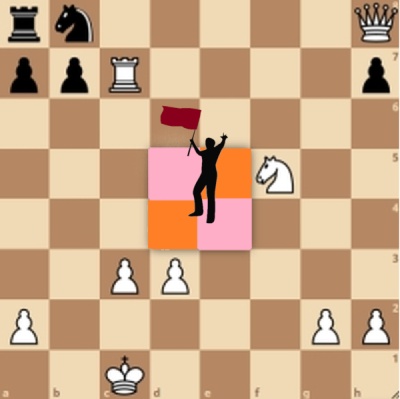Peter Anderson gives a personal opinion on the attraction of some chess variants. All these fun variants can be played on Lichess, including in the tournaments organised by Martin Clancy.
Martin has organised special taster events for these variants on Monday and Wednesday in the coming week starting at 7pm. Please see the home page for details.
Why Play Variants at All?
Do you remember when you first started playing chess and the questions that arose? Was playing 1.a4 and 2.Ra3 a good idea to get your rook in play? Should you advance lots of your pawns or move them sparingly? Perhaps struggling to get your pieces to work in harmony?
My memories of my first few games of chess are of feelings of intense uncertainty mixed with fascination as I grappled with these questions. Then having played a handful of games I read a chess book. I immediately played better from my little bit of study but some of the pure intellectual challenge and pleasure of working things out from scratch was lost. Getting that feeling back, at least in part, is one of the biggest reasons I like chess variants.
But the main reason is that some of them are just really good games, retaining enough of the feel of normal chess whilst requiring different patterns of thinking.
Below I go through 5 variants and for each:
- give a brief explanation of the rules
- what it is like to play and why I, and others, like that particular version of chess
- give three example positions to give a more tangible flavour.
I should say that I am not an expert at any of these variants and as the list progresses I understand less and less. By the time you reach Atomic I am an absolute beginner but I still enjoy playing it!
Chess 960 / Fischer Random
Rules
Pieces start in a random position on the first rank, mirrored for the two sides, with the provisos that each side must have a pair of bishops of opposite colour just as in normal chess and the king must be placed between the rooks. Apart from that the only difference between this and normal chess is how castling works which is slightly different because the rooks and king will normally be on non-standard squares.
What is it like to play? It is like being experienced and a beginner all rolled into one!
Of course 960 is the most normal of all the variants. However, right from the start you have to adjust to the opening position and decide how you would like to develop your pieces and think about how your opponent’s moves might disrupt your development. You also have to assess king safety and where best to castle. In fact in slow games people often take 5 to 15 minutes over their first move and even in blitz it can be worth a minute or two before moving.
You may get a middlegame with a fairly familiar pawn structure and piece configuration but more often than not the game will have an unusual shape, causing you to formulate new plans. Usually endgames will be quite normal but odd pawn structures can persist even to this stage of the game giving rise to novel play.
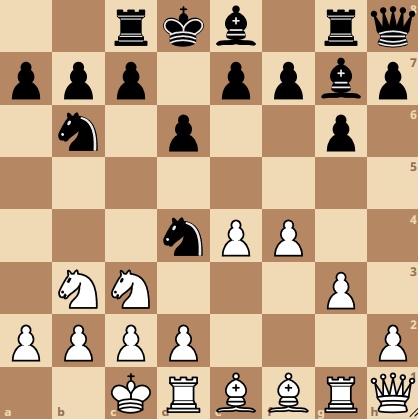
It is only six moves into the game and already there is very rich play, full of important strategic decisions. Not surprisingly the later middlegame was full of fascinating tactics.

White decided from the outset to try to control the centre with pawns, in the meantime black sacced a pawn and developed his pieces quickly. The resulting positions are really interesting and pretty tricky.
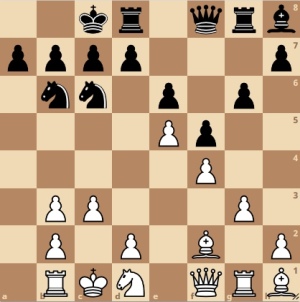
There’s a 50% chance the bishops will start on the same side of the board and a nearly 50% chance that at least one will be in a corner, so a pair of raking bishops like White’s here is quite common sight, as is a pair of knights side by side like Black’s.
Crazyhouse
Rules
The normal rules of chess apply except when you take a piece it swaps colour and becomes yours. Any captured piece can be dropped onto the board instead of playing a normal move. The only restriction is that pawns cannot be dropped on the first or eighth ranks. They can be dropped to deliver check or checkmate or defend against either of those. Pawns that have been promoted revert to pawns when they are captured.
For those of you who have played old fashioned exchange chess, with four players and two sets, it is pretty much the same except you don’t need a partner!
What is it like to play? It is great fun!
To be honest it is my personal favourite. It offers a lovely blend of strategy, positional play and tactics but with the patterns quite different from normal chess.
Relative to normal chess: the initiative is more important, king safety is more important and guarding your second rank is more important to prevent pawns being dropped onto it. Pawn wedges in the centre and near the opposing king are doubly dangerous. The piece values are different. Sacrificial attacks against the king are commonplace.
There is not a lot of opening theory and it seems to me that you can get away with not knowing any as long as you are careful not to weaken your position too much.
A little notation to help with the third example below. @ indicates dropping a piece, e.g. Q@g2 means a queen is dropped onto g2 and @f6 means a pawn is dropped onto f6.
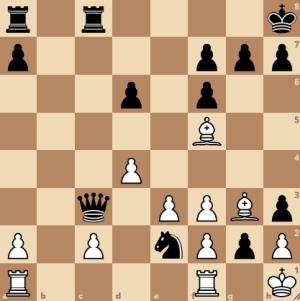
This is the final position of a Crazyhouse game where Black has dropped a knight on e2 and pawns on h3 and g2 to create a mate.
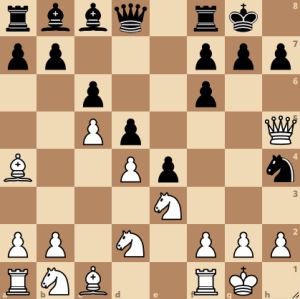
Neither side are holding any pieces so White has two pieces for two pawns but is in a very difficult position. Black has a powerful pawn wedge and can play …Nxg2 and after white recaptures can drop the pawn he has just taken on f3 with a very strong attack. You can easily imagine this giving rise to a mate similar to the one in the first diagram.
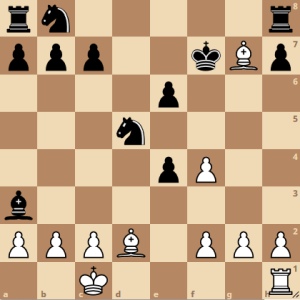
This example really shows the value of the initiative in Crazyhouse. It is Black to move and he is holding a Q, 2N, B and P vs White’s Q, R and 2P. Black can win with 19…Q@a1+ 20.R@b1 N@e2+ 21.Kd1 Qxb1+ etc. Instead he played 19…Kxg7?? and resigned after White dropped a pawn on the board with 20.@h6+! since 20…Kxh6 is met by 21.Q@g5 mate, whilst king retreats also lead to a quick mate.
King of the Hill
Rules
The normal rules of chess apply except you can also win by getting your king to any one of the four central squares (d4, e4, d5 or e5) which ends the game instantly in your favour. The only proviso is that you cannot move your king into check to reach one of those squares.
What is it like to play? This is a great mental work-out!
All the time you have to be thinking whether your opponent can make a king charge to the centre and how you can defend against that or conversely if you can make a charge. In the meantime normal chess can continue as accumulating material and positional advantages helps a lot.
I am far from an expert at this but the trick seems to me to correctly time when to try to get your king to the centre, if at all. Go too early and your opponent will normally be able to defend with precise moves controlling the central squares, then drive you back or even mate you mid-board. On the other hand, even on a busy board there can be a chance to sneak to a central square with your king, perhaps with the aid of a sacrifice or two.
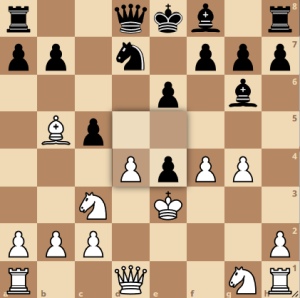
White has just played Ke3 – an early and good king charge. A tense few moves will ensue where Black tries to control the central squares with his pieces whilst White tries to reach d4, e4 or e5 via f4. These types of positions are really gripping battles!
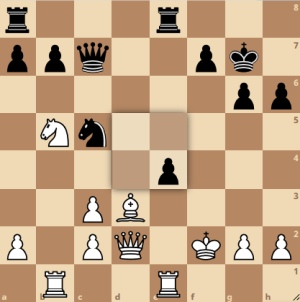
Black has sacced a piece on e4 to clear a route for his king and despite his queen being attacked can play …Kf6. White cannot stop the black king reaching e5.
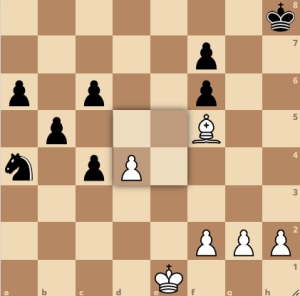
It’s Black to move and at normal chess his queenside pawns would win the day. However, at King of the Hill he is completely lost as he cannot prevent White’s march to the centre. He can play …Nc3 to prevent Ke4 but then White can play Bd7 followed by Bxc6 and d5 to allow access to d4.
3 Check Chess
Rules
The normal rules of chess apply except you can also win by checking your opponent three times, and that means three times for the whole game, i.e. they don’t have to be consecutive.
What is it like to play? Good fun – but don’t lose count!
Giving the first check is definitely worth some material, particularly if it leaves the opposing king weaker. By the time you have given two checks the next check is effectively mate so you need to start calculating like mad, with sacrifices definitely being on the agenda. And of course you have to be thinking about defending against checks too.
Games can be long and tense but equally it is really easy to go wrong very quickly – see the first example below where Christian Westrap gave me a short sharp lesson in playing 3 Check Chess!
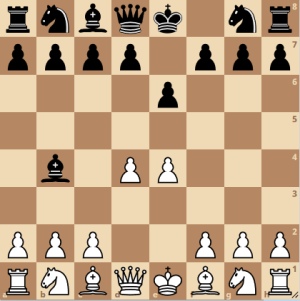
The game has gone 1.e4 e6 2.d4?? Bb4+ (first check) and White is already lost. The game continued 3.c3 Bxc3+ (second check) 4.bxc3 Qh4 and White resigned because he cannot prevent a check from the queen. 3.Ke2 might look like an improvement but does not help much e.g. 3…Qh4 4.f3 Qf2+! 5.Kxf2 Be1+ game over.
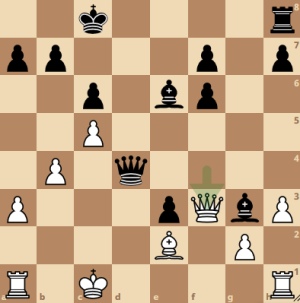
It is White to move. Some time back he sacced a piece on f6 solely to deliver a check. Now he finished the game with Qxc6+ since …bxc6 is met by Ba6+ and, for instance, …Kd8 by Qd7+
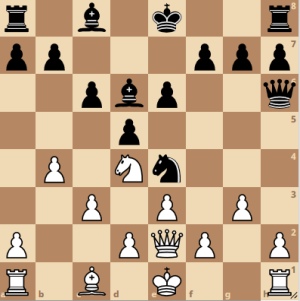
It’s Black to move. He has already delivered one check and can now play …Nxg3 as after fxg3 Bxg3+ (second check) it will be impossible for White to avoid a third check for very long.
Atomic Chess
Rules
The normal rules of chess apply except when a piece is captured the capturing piece and all the adjacent pieces are blown up (lost) with the exception of adjacent pawns. So if the king is next to a captured piece it is blown up and the game is over. Equally a king can never capture anything. You don’t even have to get out of check if you can blow up your opponent’s king immediately. One strange consequence is that kings can be on adjacent squares: one cannot capture the other as they themselves would blow up.
What is it like to play? Insane!
I have said more than once that I think it might be easier to play this game if you have never played chess before. That might be an exaggeration but there is a large element of truth in it as the patterns are so different from normal chess.
Knowing the rules and seeing what it is really like are very different, so for the only time in this bulletin I am giving a complete game. I was playing White and this was my very first game of Atomic and I duly got duffed up! I doubt I would do a lot better now. See how the pieces disappear off the board! Atomic Game
There is a surprising amount of opening theory knocking around the internet on this game and there are real atomic specialists who not only know the theory but some of the key attacking and defensive patterns. I cannot give these experts a game at all.
So if you want to get really good at a variant quickly, this might be the game for you. Practice with the experts and swot up the theory and you will be beating the likes of me in no time. Personally I am happy to play without that expert knowledge and just have fun bumbling around against other people who also don’t know what they are doing most of the time!
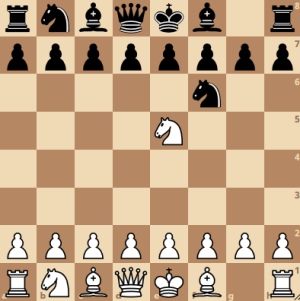
The game has gone 1.Nf3 Nf6 2.Ne5 and White will win next move as Black cannot defend against both 3.Nxd7 and 3.Nxf7, either of which will explode the black king.
The most common defence to 1.Nf3 is 1…f6 which tells you straight away what a strange game this is!
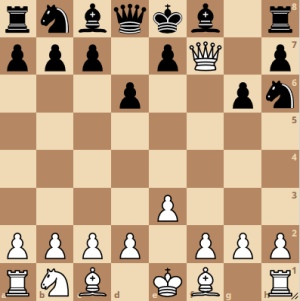
An only slightly longer game where White has just played 6.Qf7! After 6…Kd7 7.Qxe7 the black king is blown up and it is game over.
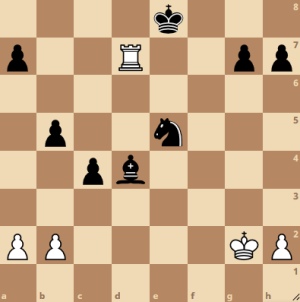
White (to move) is heavily down on material but can draw by perpetual with Re7+ and Rd7+ and Rc7+ as appropriate. The black king cannot capture the rook as he would blow himself up, and can only go to c8, d8, and e8. If the king moved to b8 or f8 White would win with Rxa7 or Rxg7 respectively.
Summary
Hopefully these examples will have given you a flavour of what these games are about. Each variant has something different to offer but all provide the opportunity for original thinking and make a delightful change to normal chess, whether you just play occasionally for fun or more regularly to learn the strategy applicable to each.
You can read more about the rules and get tips on strategy on the Lichess variants page
If we have whetted your appetite, why not join us on Monday 14th or Wednesday 16th to give them a try?


